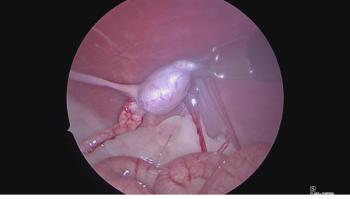
- dvm360 August 2024
- Volume 55
- Issue 8
- Pages: 24
Caring for the patient with euglycemic diabetic ketoacidosis

An overview of this life-threatening condition will help guide veterinary practitioners
Euglycemic diabetic ketoacidosis (eDKA) is a life-threatening feline condition that requires immediate medical attention. The condition is caused by decreased hepatic glucose production in a fasting patient or enhanced urinary excretion of glucose from an excess of counter-regulatory hormones, according to Christopher G. Byers, DVM, DACVECC, DACVIM (SAIM), CVJ, a teleconsultant with VetCT, and a veterinary educator and founder of CriticalCareDVM.com.1
Patients with euglycemic diabetic ketoacidosis are dependent on insulin. “Euglycemic diabetic ketoacidosis is a rare potential complication of treatment with what we call a sodium-glucose cotransporter 2 (SGLT2) inhibitor,” Byers said, while presenting the session “Endocrine Emergencies” at the
Identifying eDKA
Veterinary professionals should obtain a complete drug history to identify whether a patient has been treated with SGLT2 inhibitors, according to Byers. This information is important for practitioners, who may not consider eDKA if a history of SGLT2 inhibitor use remains unknown.
Patients with eDKA may present a history of polyuria and polydipsia (PUPD), hypoglycemia caused by anorexia, vomiting, lethargy, perceived discomfort, neurological abnormalities, and/or weight loss. A physical examination may show evidence of hypovolemia, dehydration, and/or weakness. Other clinical signs of an eDKA case may include cervical ventroflexion with marked hypokalemia, a bilateral plantigrade stance, enlarged liver, jaundice, variable heart rate, acetone halitosis, and muscle weakness.1,2
The liver produces less glucose when a patient with diabetes has hypoglycemia or anorexia with a stressor condition such as pancreatitis, neoplasia, or infection.Furthermore, a lack of insulin-induced inhibition of hormone sensitive lipase may cause enhanced lipolysis and subsequent fatty acid production to lead to excessive ketone body production such as beta-hydroxybutyrate [BHB], acetoacetate or acetone, according to Byers. eDKA can occur with decreased glucose availability or production, reduced insulin secretion, and increased counter-regulatory hormone production caused by an underlying condition.1
Byers noted that data should be collected, at minimum, from serum glucose, plasma or urine ketones, venous blood gas, anion gap, and electrolytes for diagnosing patients with suspected eDKA. Additional diagnostic data collection is also recommended through pancreatic serology, urinalysis, urine culture or sensitivity, imaging, and testing for feline leukemia virus and feline immunodeficiency virus.1
Diagnostic criteria is as follows2:
- Relative euglycemia: GLU less than 250 mg/dL or less than 13.9 mmol/L
- Acidosis: pH less than 7.3, HCO3 less than 18 mmol/L
- Ketosis
Currently accepted diagnostic criteria for eDKA in cats are extrapolated from human medicine, Byers noted. "As we learn more about eDKA in cats, veterinary diagnostic criteria may evolve," he said.
Common laboratory abnormalities in cats with eDKA include a leukocytosis, which can occur with inflammation or infection and anemia caused by Heinz bodies; as well as elevations in hepatocellular and cholestatic enzymes because of concurrent primary hepatopathy, pancreatitis, sepsis, or hepatic hypoperfusion. Additionally, a biochemical profile may show hypertriglyceridemia caused by hypoinsulinemia.1
Treating eDKA
A diagnosis of eDKA is managed like diabetic ketoacidosis (DKA), which requires a comprehensive diagnostic evaluation.3 According to Byers, the key therapies are as follows2:
- Discontinuation of SGLT2 inhibitors
- Providing regular insulin intravenous (IV) constant-rate infusion (CRI)
- Providing dextrose supplementation to prevent iatrogenic hypoglycemia
- Providing appropriate fluid therapy to correct dehydration and electrolyte derangements
Insulin therapy is essential and should ideally be started after the first hour of fluid therapy if hypovolemia has been successfully treated and serum potassium is equal or less than 3.3 mmol/L. Currently, an IV CRI of a short-acting insulin is considered the most appropriate initial treatment for eDKA, according to Byers. Dextrose therapy is a requirement, used concurrently with insulin, to prevent iatrogenic hypoglycemia.1,2
Identifying and treating precipitating factors, and providing nutritional support to patients with eDKA are also important for improving outcomes. Treatment should include use of IV fluids to correct hypovolemia and dehydration, while administration of insulin and dextrose help normalize levels of acidosis, anion gap and bicarbonate.1
“After successfully addressing hypovolemia and reaching desired endpoints of resuscitation, a balanced electrolyte solution should be administered based on the patient’s hydration and electrolyte status. Administration of 0.9% sodium chloride is discouraged given the potential of inducing a hyperchloremic metabolic acidosis. A patient’s dehydration deficit should be calculated and replaced over 12-24 hours. Daily requirements (50 mL/kg/day) and ongoing losses should be administered concurrently,” Byers wrote in the presentation.1
Potassium supplementation is required for patients with hypokalemia and used in cases of refractory hypokalemia, certain ventricular dysrhythmias or persistent lethargy, anorexia, or weakness. Furthermore, replacement of phosphorous should occur if levels are less than 1.5 mg/dL (less than 0.48 mmol/L), and sodium bicarbonate supplementation should be considered in patients with bicarbonate levels less than 11 mmol/L. The suggested dose of sodium or potassium phosphate is 0.01-0.03 mmol/kg/hr IV CRI.1
Post-treatment
Patient monitoring following critical care should include frequent physical examinations, perfusion parameters, serial serum glucose measurements, electrolytes and mineral status as well as acid-base status, and packed cell volume and total solids. A patient that is no longer acidemic or ketotic and is eating and drinking without complications, may be transitioned to a long-acting insulin therapy prior to hospital discharge.2
For more coverage from Fetch Charlotte, visit our dedicated conference news page at
References
- Byers C. Proceedings: endocrine emergencies. Flex dvm360. Accessed March 13, 2024.
- Byers C. Endocrine emergencies. Presented at: Fetch dvm360 Conference; Charlotte, NC. March 15-17, 2024.
- Rudloff E. Diabetic ketoacidosis in the cat: recognition and essential treatment. J Feline Med Surg. 2017;19(11):1167-1174. doi:
10.1177/1098612X17735762
Articles in this issue
over 1 year ago
Sharing stories of compassion on the West Coastover 1 year ago
Meet the 2024 Hospital Design 360 Competition Merit Winnersover 1 year ago
Equine head wounds and skull fracturesover 1 year ago
Converting callers into clientsover 1 year ago
Life lessons from a US Army Veterinary Corps veteranover 1 year ago
Designing for low-cost community veterinary servicesover 1 year ago
Award winners show why hospital design mattersover 1 year ago
Social media: friend or foe?Newsletter
From exam room tips to practice management insights, get trusted veterinary news delivered straight to your inbox—subscribe to dvm360.




